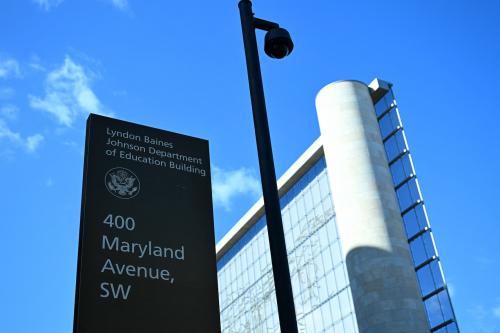Voters are supposed to choose their representatives, but the flawed redistricting process in our nation too often allows representatives to choose their voters. This rigged game is in full flower in Virginia, which has an accelerated redistricting process this year because elections for its House of Delegates and Senate take place in November. State Senate Majority Leader Richard Saslaw (D) was stunningly candid in a recent radio interview in describing the process politicians would follow to redraw the lines:
“The House does theirs. The Senate does theirs. And I’m not gonna interfere with the lines the House draws for the House. And they’re not gonna interfere with the lines I draw for the Senate. And I would simply say, well, you know, our goal is to make the Democratic districts, particularly the marginal ones, a little bit better than they are now. I’m not greedy. I’m not trying to put all the Republicans out of business by any stretch. They didn’t do that to us 10 years ago. And we’re not gonna do that to them.”
Saslaw described a classic bipartisan incumbent gerrymander; the majority Democrats in the state Senate would let the majority Republicans in the state House stack the deck for its incumbents, and vice versa. The biggest losers? The voters of Virginia, denied competitive elections in which the outcomes reflect their collective preferences.
The situation is different but just as smelly for the redrawing of lines for Virginia’s 11 congressional seats. As Politico described last week, the 11 incumbents — three Democrats and eight Republicans — cut a deal to protect each other, solidifying the GOP’s 8-to-3 edge by making several competitive seats strongly Republican while allowing Democrats to make a sinecure out of the seat of Rep. Gerry Connolly, who barely won in 2010.
Around the country, comparable deals will be cut by pols intent on protecting each other or maximizing the number of seats a party controls (in a way that distorts the actual partisan balance in the state). Thanks to the Supreme Court, the only restraint, other than adhering to the requirements of the Voting Rights Act, is to make sure that all the districts are virtually equal in population. With the aid of sophisticated software, the one-person, one-vote rule allows ample scope for the self-interested manipulation of district boundaries.
Politicians could get away with this in the past because few others had access to the tools to create districts using official census data and past election returns.
No more.
Michael McDonald of George Mason University and Micah Altman of the Institute for Quantitative Social Science at Harvard, working in conjunction with our two think tanks, have created the Public Mapping Project, an open-source software package that enables anybody to create districts for any state that balance such desirable qualities as compactness and the protection of communities of interest with competitiveness and partisan fairness, all while satisfying one-person, one-vote and the Voting Rights Act.
The first important use of the software is coming in Virginia. To his credit, Gov. Bob McDonnell (R) has created an independent redistricting commission that can recommend more objective and public-interest-oriented plans than the ones produced by the pols. Unfortunately, McDonnell’s commission has no teeth beyond its public profile and ability to showcase plans that can point up, by their quality, the folly of rigged plans. The commission has agreed to give serious weight to the best plans produced by a competition created by George Mason and Christopher Newport universities. Teams of students from 13 colleges and universities in Virginia produced 57 plans for Congress, the House of Delegates and the state Senate. Unlike the plans politicians are crafting behind closed doors, all of the student plans are online (at districtbuilder.varedistrictingcompetition.org).
The two of us judged the plans (awards will be presented in Richmond on Tuesday) and were deeply impressed with what these students — most of them undergraduates but including a team from William and Mary Law School — accomplished. They weighed how to draw district maps that respected federal and state requirements without bending to the interests of incumbent officeholders or political parties. They created two sets of maps: one, through a politically blind process that prioritized contiguous and compact districts respecting Virginia’s communities of interest, including cities and counties, and sensitive to the representation of minorities; the other, by adding to these standards an explicit effort to create as many competitive districts as possible and to fairly reflect public support for the two parties. This was not easy, given the substantial changes in Virginia’s population since the last census, the need to create districts that are virtually equal in population and the trade-offs required when redistricting criteria conflict.
The best student plans show that it is possible to create more legitimate and responsive districts — and that with the right tools, citizens anywhere can create better plans to choose their representatives than the representatives do to protect their own careers. While politicians may fight to keep the process closed, the tools are available to enable us to do better. Virginia’s college students have demonstrated that. The challenge is to replicate their efforts across the country and to harness informed and empowered public participation to improve the quality of our democracy.
The Brookings Institution is committed to quality, independence, and impact.
We are supported by a diverse array of funders. In line with our values and policies, each Brookings publication represents the sole views of its author(s).



Commentary
Op-edThe Rigged Redistricting Process
March 18, 2011